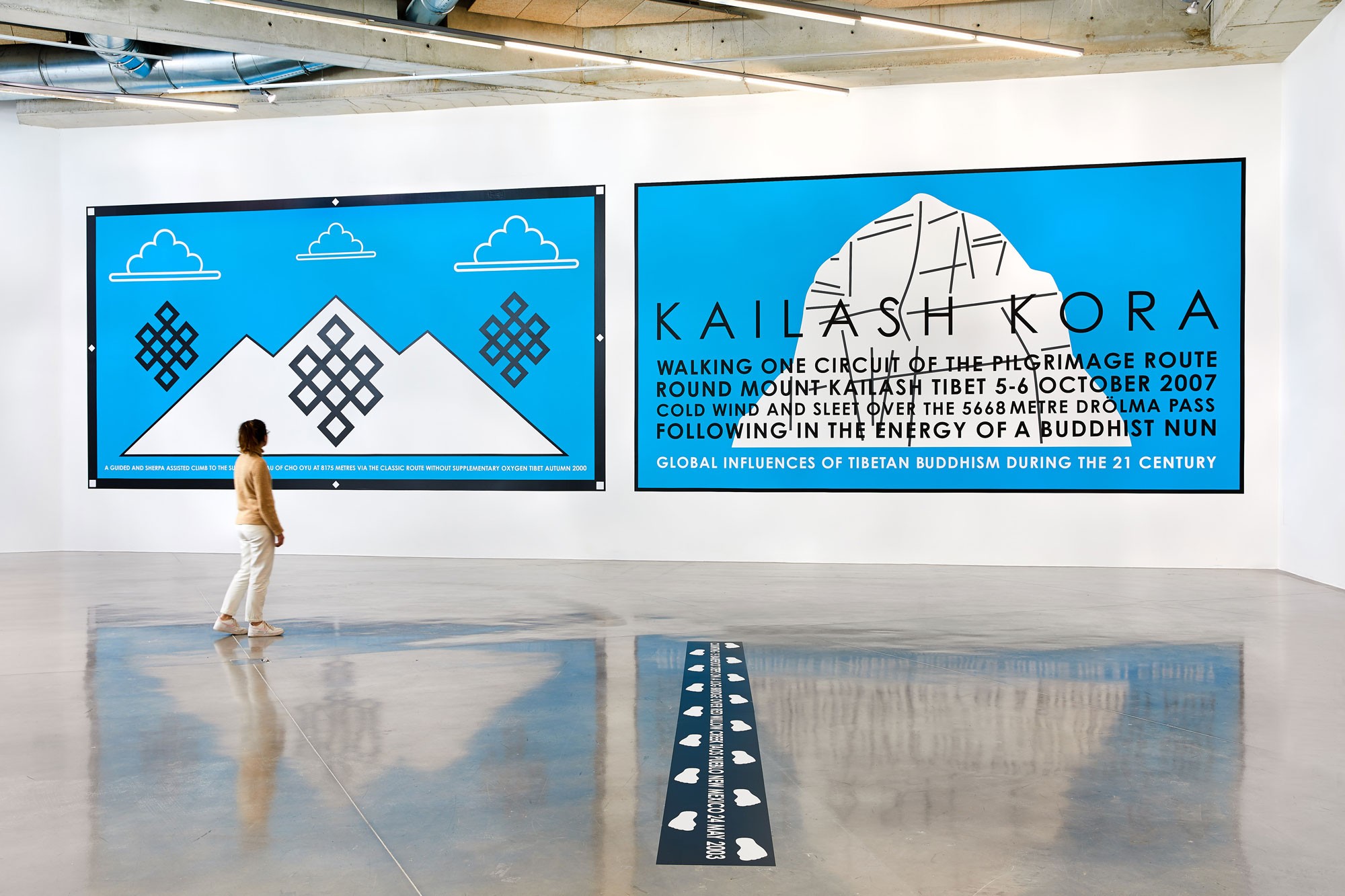
He's the other walking man. The flesh-and-blood counterpart to Alberto Giacometti's famous sculpture. Since the early 1970s, 76-year-old Briton Hamish Fulton has been walking and creating - much longer than writer Sylvain Tesson. He surveys the Earth and recreates this experience in a variety of media (painting, photography, watercolours, sculpture, writing...). This walker's approach is unique.
An artist off the beaten track
Hamish Fulton began putting one foot in front of the other after studying art and photography at the Royal College of Arts, where his classmate was Richard Long, also a keen walker and pioneer of Land Art. Conceptual art was in vogue at the time. Ideas took precedence over form. Unlike his friend Richard Long, Hamish Fulton doesn't create anything in situ. He doesn't transform nature, he is transformed by it. His art is underpinned by an environmental thought linked to the preservation of nature and its wild character.
"There's also a spiritual dimension to Hamish Fulton's work, points out Muriel Enjalran, director of the Frac Sud - Cité de l'art contemporain in Marseille, which is hosting an exhibition devoted to the Briton. In the late 1960s, Buddhism had a strong influence on cultural circles. In the 1970s, Hamish Fulton spent time on Indian reserves and came face to face with animism. This infused a body of work that has now been unfolding for 50 years, reminding us of our interdependence with the living."
Good foot, good eye
During his travels, Hamish Fulton always fills in a notebook as he goes along. On his return to his home port of Canterbury, Kent, he uses this logbook to create works with simple forms and minimalist strokes. Painted on the walls of the Frac Sud, these large-scale frescoes present factual and objective data: the number of animals encountered, the topography, the colors of the sky... A physical and mental experience for the spectator that continues in the monumental space of the plateau explorations with photos and wooden pieces.
Miles on the clock
Each of Hamish Fulton's exhibitions is preceded by a tour of his host region. In June 2022, he spent 21 days in the Mercantour National Park. Starting from Barcelonnette, he retraced a path he had taken in 2011.
"He realized that in the space of 10 years, the snow had melted and the streams had dried up, explains Muriel Enjalran. Hamish Fulton's practice is also being closely observed by scientists to identify the concrete effects of global warming."
Thinking with your feet
Just 140 km from Marseille (about 30 hours on foot), the Cairn Centre d'Art in Digne-les-Bains exhibits the political commitment of this nomadic artist. During various treks in the Himalayas (2000, 2007, 2011), Hamish Fulton witnessed the violence of the Chinese occupation of Tibet. The Cairn, which is located not far from the residence-museum of writer and explorer Alexandra David Neel, who was the first Western woman to enter Lhasa in 1924, is the ideal place to present a body of work by Hamish Fulton that denounces the silence of Western countries on the question of human rights in this part of the world, and salutes the resistance of Buddhist monks. For Hamish Fulton, walking is both mystical practice and political action. To move forward, you have to know how to use both your head and your legs.

Hamish Fulton, A walking artist. Frac Sud contemporain, Marseille → 29.10.23
Hamish Fulton, Tibetan Kora. Cairn Centre d’art, Digne-les-Bains → 07.07.23